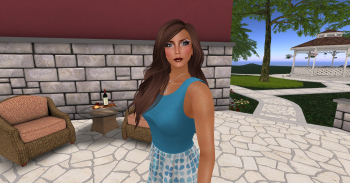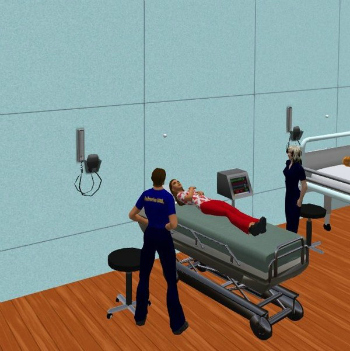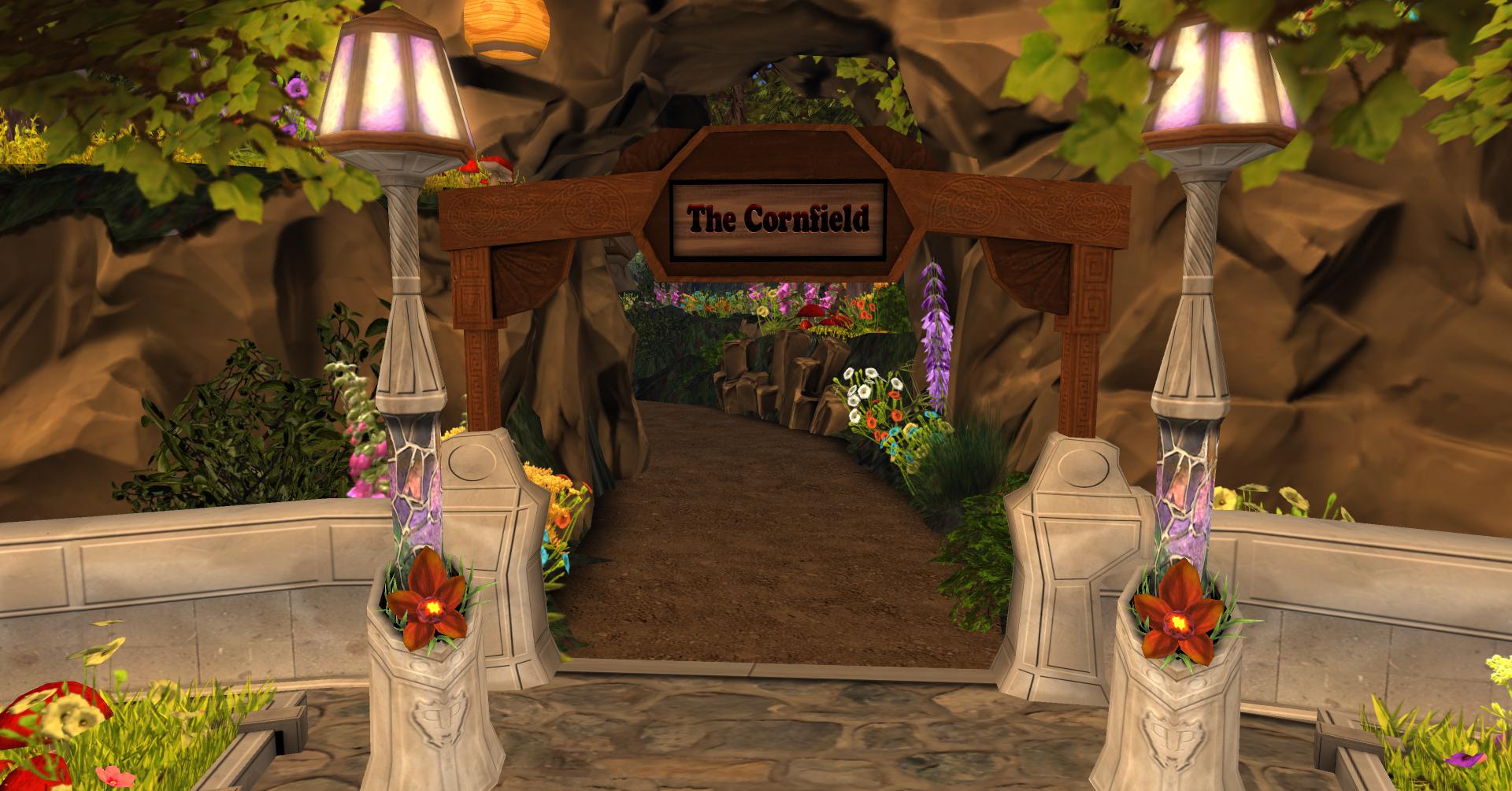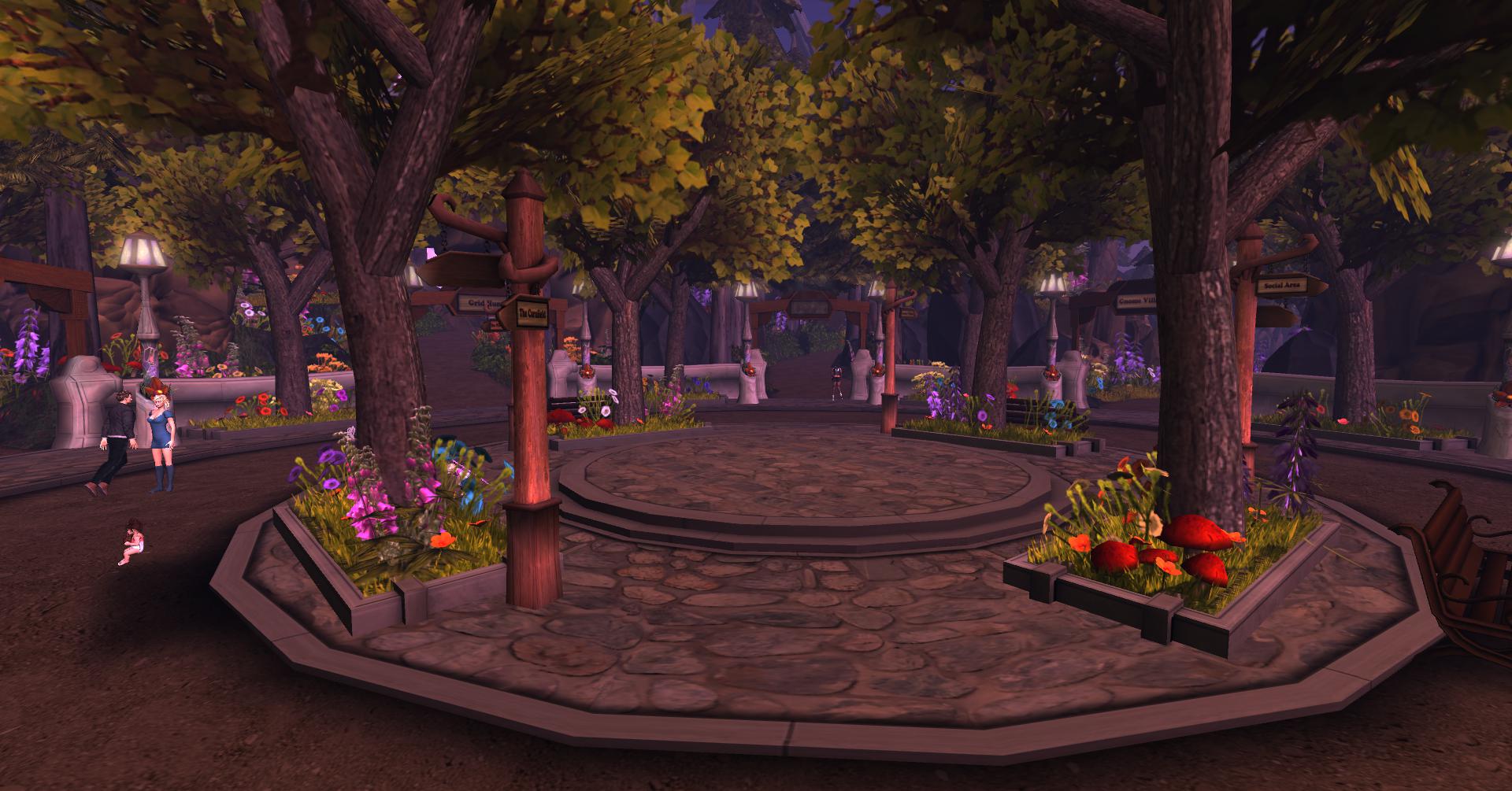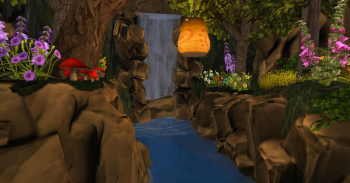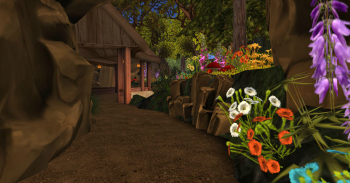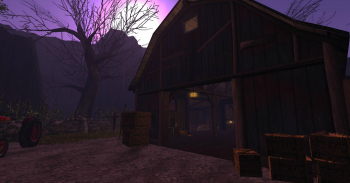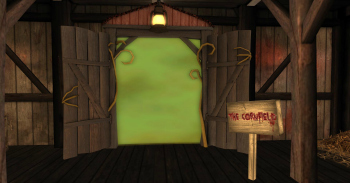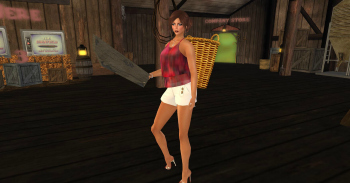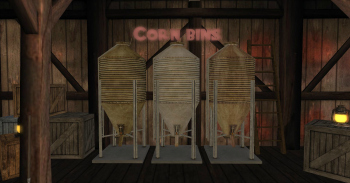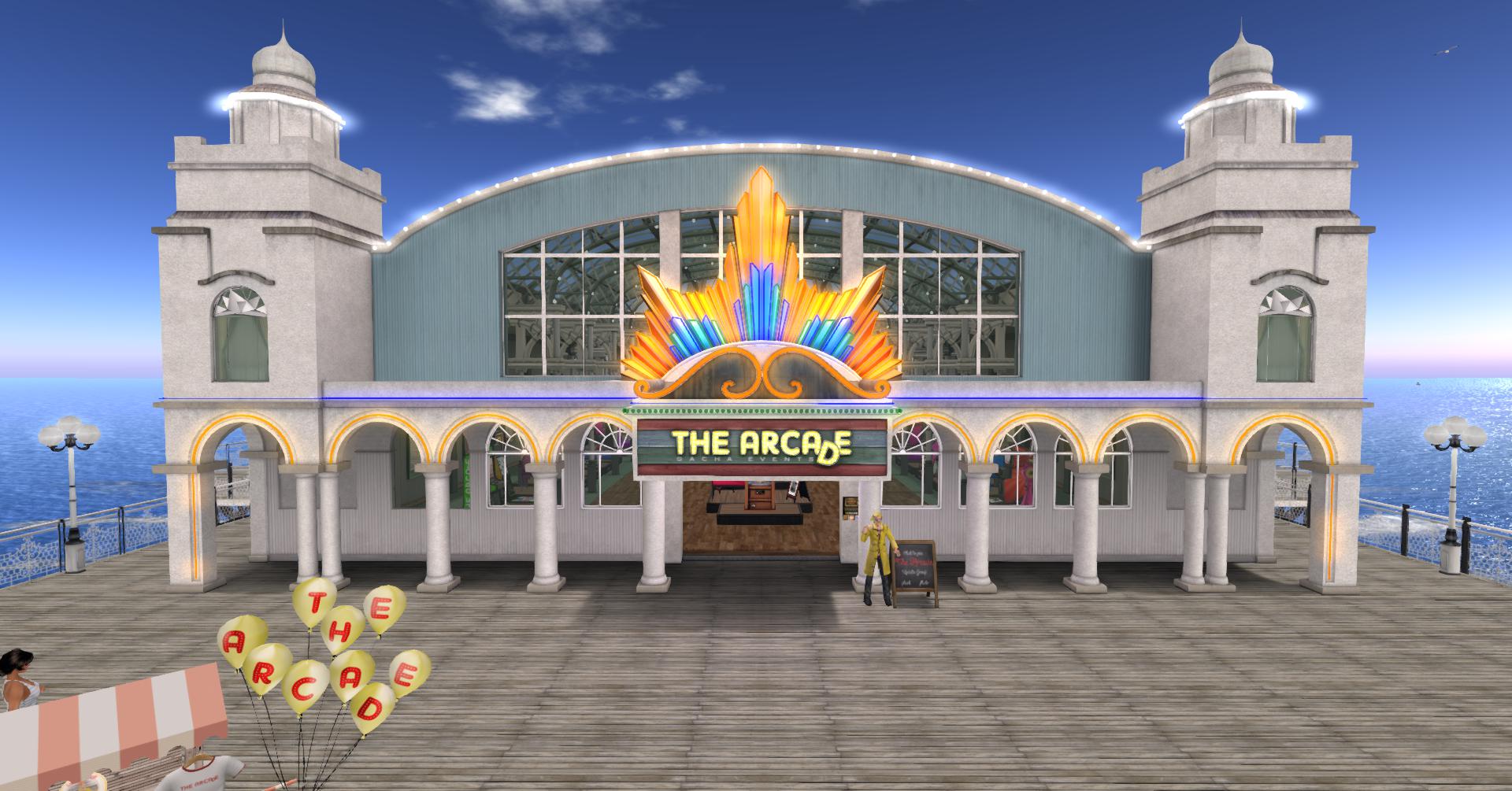 As I am still tapping my foot impatiently, waiting for the next big MadPea event (I am so over the Green Mire; but then again I’m not a huge fan of the whole aliens thing), I decided to check out the Destination Guide for some inspiration. There, I discovered Gatcha, and I had to go see what all the excitement is about.
As I am still tapping my foot impatiently, waiting for the next big MadPea event (I am so over the Green Mire; but then again I’m not a huge fan of the whole aliens thing), I decided to check out the Destination Guide for some inspiration. There, I discovered Gatcha, and I had to go see what all the excitement is about.
Gatcha, a wildly popular game in Second Life, is loosely taken from the real life Japanese “Gacha” games, where you pay a small amount of money to get an item at random, similar to purchasing toys from a vending machine. In real life, games that use gacha typically promise rare “grand-prize” items to players who can manage to amass a set of specific items, which encourages players to spend more money on randomized gacha draws in order to complete their collections.
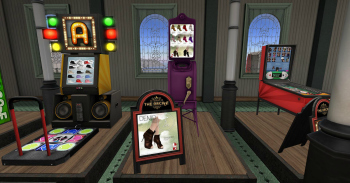 In Second Life, you can get “rare” items but they are strictly random and have nothing to do with amassing collections or trading in order to complete a collection in order to trade up to rare items. In Second Life, Gatcha machines are designed similarly to real life old fashioned vending machines — sometimes they look like penny arcade games, sometimes they look like old fashioned pinball machines or arcade game machines from the 70s.
In Second Life, you can get “rare” items but they are strictly random and have nothing to do with amassing collections or trading in order to complete a collection in order to trade up to rare items. In Second Life, Gatcha machines are designed similarly to real life old fashioned vending machines — sometimes they look like penny arcade games, sometimes they look like old fashioned pinball machines or arcade game machines from the 70s.
These gatcha machines have grown from being inside the stores at various merchants across the grid, to huge sims dedicated to nothing but gatcha. I assume that this mass exodus to gatcha only sims is in response to Linden Lab’s new rules on gaming, and that gaming is restricted only to gaming sims which have different rules and pricing structures.
I have never been a huge fan of gatchas; to me they are simply another way to suck Lindens from me, and while the gambling idea appeals to many people, I am simply not a gambler or risk taker in RL. Just like in RL gambling, you have to be smart. While the rare item inside the machine may be something you really want, make sure you don’t spend $1,000L on the machine to try and get a $50L trinket. You really have to weigh the value of the goods inside the machine against the return of the items you may or may not get.
I’m sure for some people, it’s the thrill of the gambling that makes it worth it, and the feeling of satisfaction of finally getting that rare item outweighs the cost. It’s just another way to pay for entertainment, just like in RL gambling.
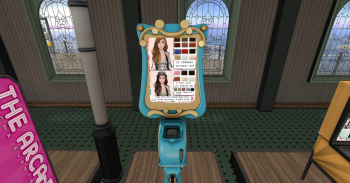 I decided to visit a Gatcha sim, and see what all the fuss was about. I decided to visit The Arcade Gatcha Event, which is touted in the Destination Guide as “The Arcade Gacha Events presents the ultimate GACHA experience! Guaranteed to delight shoppers, The Arcade offers unique gacha prizes from 100 of the grid’s top designers! Proudly sponsored by Apple Fall, Boogers, Pure Poison, and Style Kingdom.”
I decided to visit a Gatcha sim, and see what all the fuss was about. I decided to visit The Arcade Gatcha Event, which is touted in the Destination Guide as “The Arcade Gacha Events presents the ultimate GACHA experience! Guaranteed to delight shoppers, The Arcade offers unique gacha prizes from 100 of the grid’s top designers! Proudly sponsored by Apple Fall, Boogers, Pure Poison, and Style Kingdom.”
Boogers? Okaaaaay….
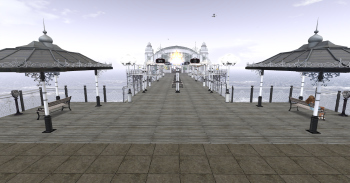 When I landed at the Arcade, the visual appeal of the place was amazing. It was built very similarly to what I imagine a casino or arcade at the Atlantic City Boardwalk in New Jersey, USA would look like. I appreciated the time and effort they put into the minute details of the sim — the textures and buildings themselves were crisp and amazing. The windlight settings made you feel like you were at the ocean with a slight hint of fog in the air. You could hear the mournful fog horn (or maybe it was a ship’s horn) in the distance, along with the clang of the bell on a bouy, the sounds of the surf and the seagulls calling to one another.
When I landed at the Arcade, the visual appeal of the place was amazing. It was built very similarly to what I imagine a casino or arcade at the Atlantic City Boardwalk in New Jersey, USA would look like. I appreciated the time and effort they put into the minute details of the sim — the textures and buildings themselves were crisp and amazing. The windlight settings made you feel like you were at the ocean with a slight hint of fog in the air. You could hear the mournful fog horn (or maybe it was a ship’s horn) in the distance, along with the clang of the bell on a bouy, the sounds of the surf and the seagulls calling to one another.
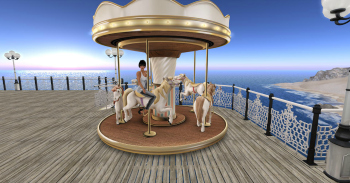 As you approach the Arcade, you walk down a long boardwalk, and outside the arcade is a cute merry-go-round (which I decided to take a ride on) and some vendors where you can purchase cotton candy, hot dogs and other fun carnival-type food. There was caliope-music playing, and while that was cute and catchy for five minutes, after that it just got annoying and I turned down sounds.
As you approach the Arcade, you walk down a long boardwalk, and outside the arcade is a cute merry-go-round (which I decided to take a ride on) and some vendors where you can purchase cotton candy, hot dogs and other fun carnival-type food. There was caliope-music playing, and while that was cute and catchy for five minutes, after that it just got annoying and I turned down sounds.
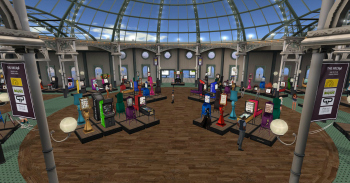 Inside the building is a very visually appealing beautiful build that looks exactly like the inside of an arcade is supposed to look. The details are amazing, and the Gatcha machines are very well made. It is a very popular spot — there were 41 avatars on the sim when I was there, and more continued to arrive and depart. All the avatars, along with the scripty Gatcha machines, made for a lot of lag. But everyone seemed to take it in stride and be very good-natured about it.
Inside the building is a very visually appealing beautiful build that looks exactly like the inside of an arcade is supposed to look. The details are amazing, and the Gatcha machines are very well made. It is a very popular spot — there were 41 avatars on the sim when I was there, and more continued to arrive and depart. All the avatars, along with the scripty Gatcha machines, made for a lot of lag. But everyone seemed to take it in stride and be very good-natured about it.
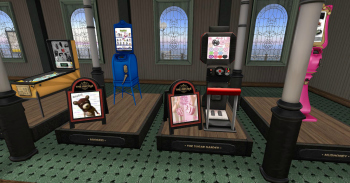 Each Gatcha machine is labeled with the name of the merchant whose items are inside the machine, and each machine has different cost. The way a Gatcha machine works, is each machine is loaded with several items made by that particular merchant. Some are labeled “rare” and some are just ordinary. Often, the Gatcha machine will be loaded with several colors of one particular item, and you pay the machine and it will dispense one of the items. If the machine doesn’t give you the item you wanted, then you simply pay the machine again and hope for a different outcome. I have no idea if the scripts are completely random, or programmed to give a rare item every so many clicks, or what. Sometimes you end up with the exact same item several times in a row. Sometimes you end up with a rare item on the first ca-ching. As I cautioned earlier, you really have to decide how much you’re willing to spend to receive the exact item you were wanting. The cool thing is that some vendors had demo items you could purchase and try, before you attempted to get one of the items from the machine.
Each Gatcha machine is labeled with the name of the merchant whose items are inside the machine, and each machine has different cost. The way a Gatcha machine works, is each machine is loaded with several items made by that particular merchant. Some are labeled “rare” and some are just ordinary. Often, the Gatcha machine will be loaded with several colors of one particular item, and you pay the machine and it will dispense one of the items. If the machine doesn’t give you the item you wanted, then you simply pay the machine again and hope for a different outcome. I have no idea if the scripts are completely random, or programmed to give a rare item every so many clicks, or what. Sometimes you end up with the exact same item several times in a row. Sometimes you end up with a rare item on the first ca-ching. As I cautioned earlier, you really have to decide how much you’re willing to spend to receive the exact item you were wanting. The cool thing is that some vendors had demo items you could purchase and try, before you attempted to get one of the items from the machine.
All in all, it was a fun experience, and worth doing at least once, especially if you like tchotchkes! There are several such Gatcha sims around, so I am sure each one offers a different experience.
I remain respectfully yours,
Suzanne Piers
ZoHa Islands Social Media Manager

